Lebanon Situation Report | November 2024
Posted in: Report
Economy & Education
Since September 2024, escalating violence has severely impacted Lebanon, with over 1.2 million people affected by Israeli airstrikes on historical sites, villages, and infrastructure. More than 185,000 people have sought refuge in over 1,000 shelters, half of whom are women and children.
The conflict has caused significant damage to Lebanon’s economy, including a 20% decline in border trade, the destruction of millions of meters of agricultural land amounting to $350 million in losses, and widespread damage to industrial, commercial, and tourism sectors which amounts to an estimated $10 billion in losses.
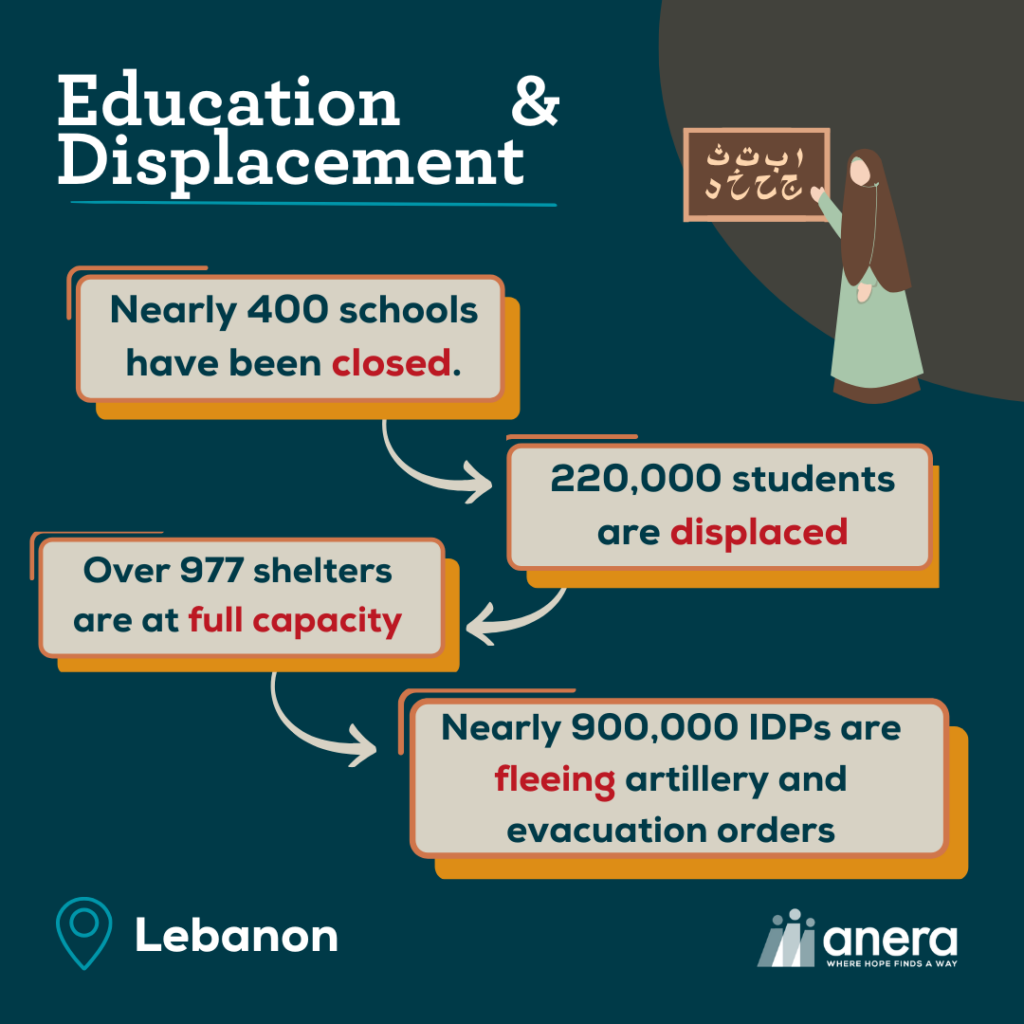

Education & Displacement
Around 60% of public schools are being repurposed as shelters, and nearly 400 schools have been closed, impacting 220,000 students including 44,350 displaced children. Despite a phased resumption of classes, many children are still unable to attend school due to displacement. Lebanese teachers admit that this academic year has been “accessible only to those able to afford it.”
Over 977 shelters are now at full capacity as the displacement crisis continues, with over 561,000 people fleeing to Syria and Iraq. Nearly 900,000 IDPs throughout the country are struggling with overcrowding and resource shortages, with thousands more on the border facing active artillery and evacuation orders that land – without warning. 25 border municipalities have been partially decimated as the IOFs ground invasion works to establish a buffer zone.
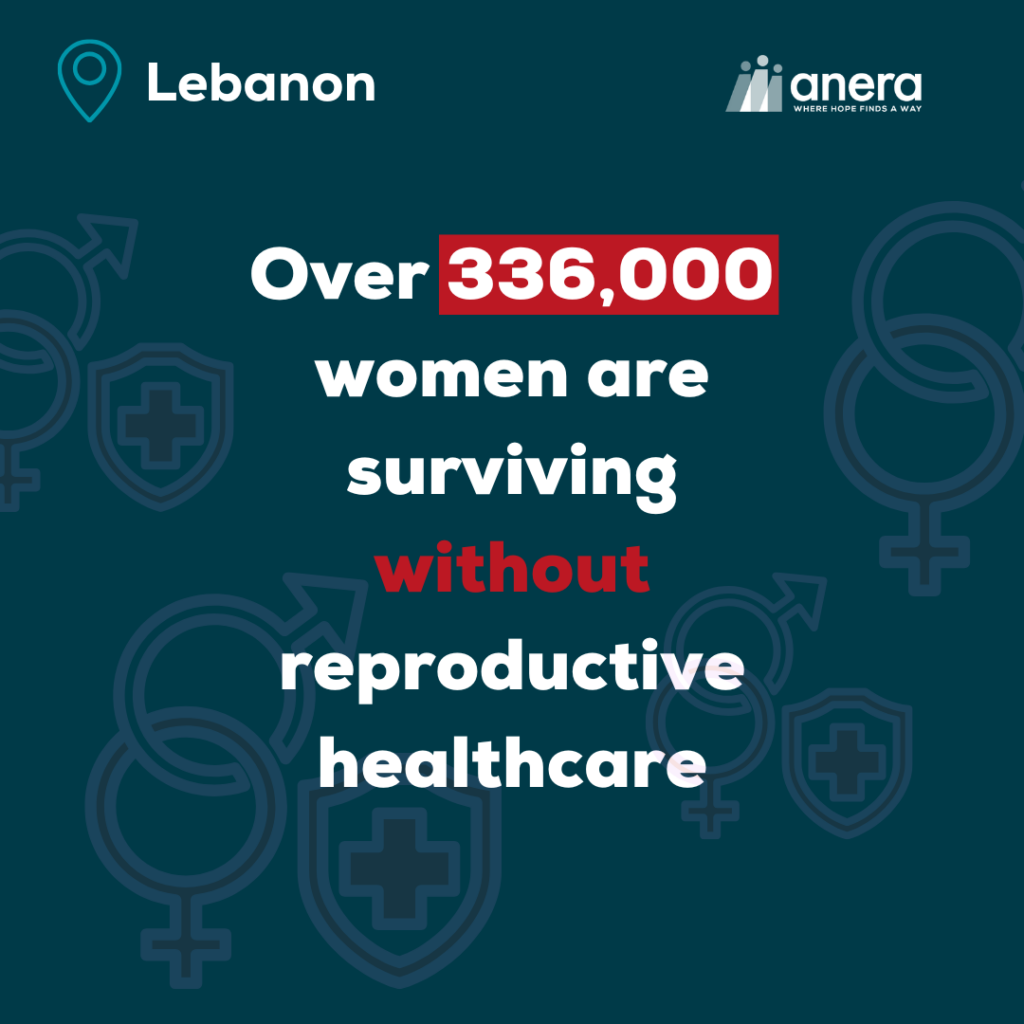

Violence & Health
Since October 2023, 3,386 people have been killed by Israeli attacks including 658 women, 220 children, with another 14,417 injured. Previously undisturbed areas are now frequent targets, bringing the total number of attacks to 12,736. Massive damage to healthcare infrastructure is leaving many emergencies unaddressed, meaning 400,000 displaced children are at serious risk of illness and waterborne diseases like cholera, hepatitis, and diarrhea, and 336,000 women are surviving without reproductive healthcare.
192 health personnel have been killed and 308 facilitators have been injured in ongoing hostilities, with an additional 244 ambulances, 88 health facilities, 40 hospitals, and 65 primary healthcare centers (PHCC) facing damage across the country. WHO just acknowledged that over 1.5 million refugees and IDP urgently need mental health and psychosocial support – those remaining are facing immense need.


Economic Activity, Livelihoods, Food Security
The shelling and subsequent burning of millions of meters of arable land has led to losses in the agricultural sector to a now estimated $350 million, in addition to placing approximately 1.4 million people into high levels of acute food insecurity or emergency conditions.
In the south, damage to 220 industrial and commercial establishments has generated a combined loss of around $15 million. Urban shelling has also plummeted the tourism sector, led by considerable decreases in restaurant, hotel, and visitor transactions since the same time last year – amounting to approximately $3 billion in losses.
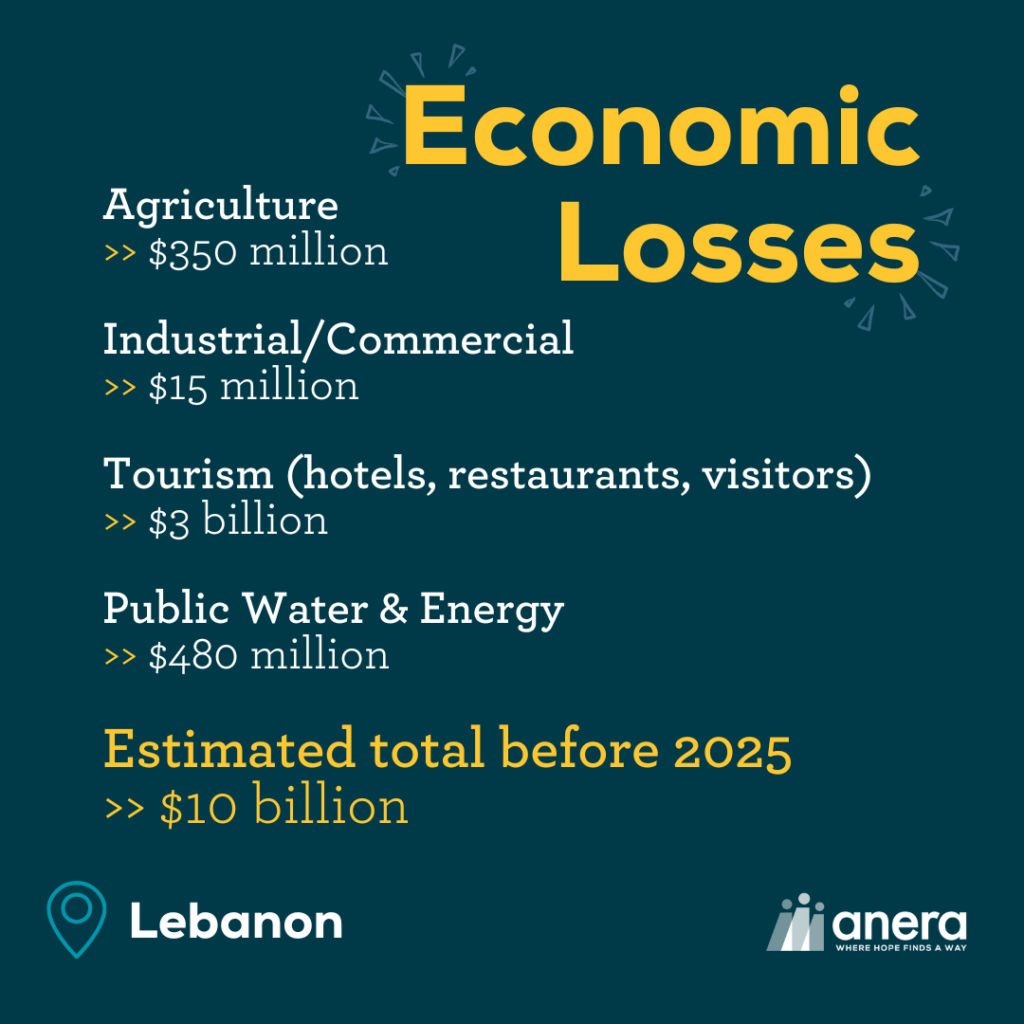

The Lebanese economy faces long term economic contraction ahead, enabled by rising unemployment and declining GDP, private consumption, investments, trade, and public revenue. Financing needs greatly exceed available funds, with direct and indirect losses for Lebanon since the start of the war projected to reach $10 billion before the year ends.
Water & Sanitation
Relentless attacks on water facilities have stripped 400,000 residents in Southern Lebanon of access to potable water. Deliberate targeting of water infrastructure, like the pumping sites or desalination plants, reinforces the domination of an occupying force over foreign lands, and greatly harms the people of Lebanon in need of access to water. Losses suffered by the public water and energy sectors amount to an estimated $480 million.
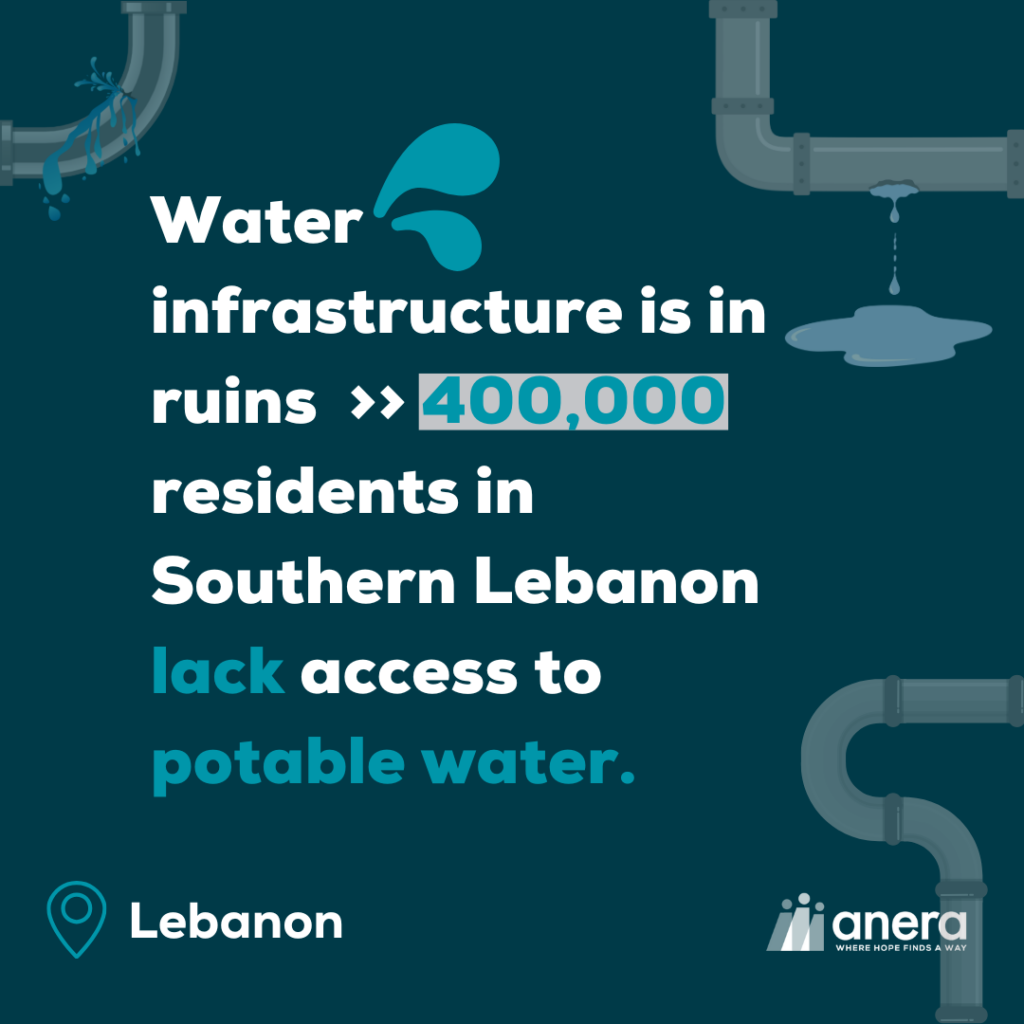

Humanitarian Needs
The international community has pledged over 1 billion dollars for humanitarian assistance in Lebanon, but on November 11 OCHA reported that of the hundreds of millions of dollars requested, only 24% has been received. The funding requirement for adequate responses in healthcare, such as for gender-based violence interventions or humanitarian assistance, vastly outweighs distributed finances. UNICEF estimates that 1 million people, including 350,000 children, are in need of humanitarian assistance in Lebanon – an estimated cost of $105 million. Flash appeals for Lebanon through Inter-Agency have not met the present needs yet.
Anera’s Response
Since September 17, Anera has helped 358,000 people access meals, over 3 million gallons of water, and healthcare essentials: 28,000 bedding items, 31,000 hygiene kits, over 2,000 female hygiene kits, 90,000 doses of medication, and 117,000 units of medical supplies. The approaching winter and collapsed healthcare infrastructure has ravaged the ability for families to look after themselves, reaffirming the necessity of Anera’s courageous team on the ground.
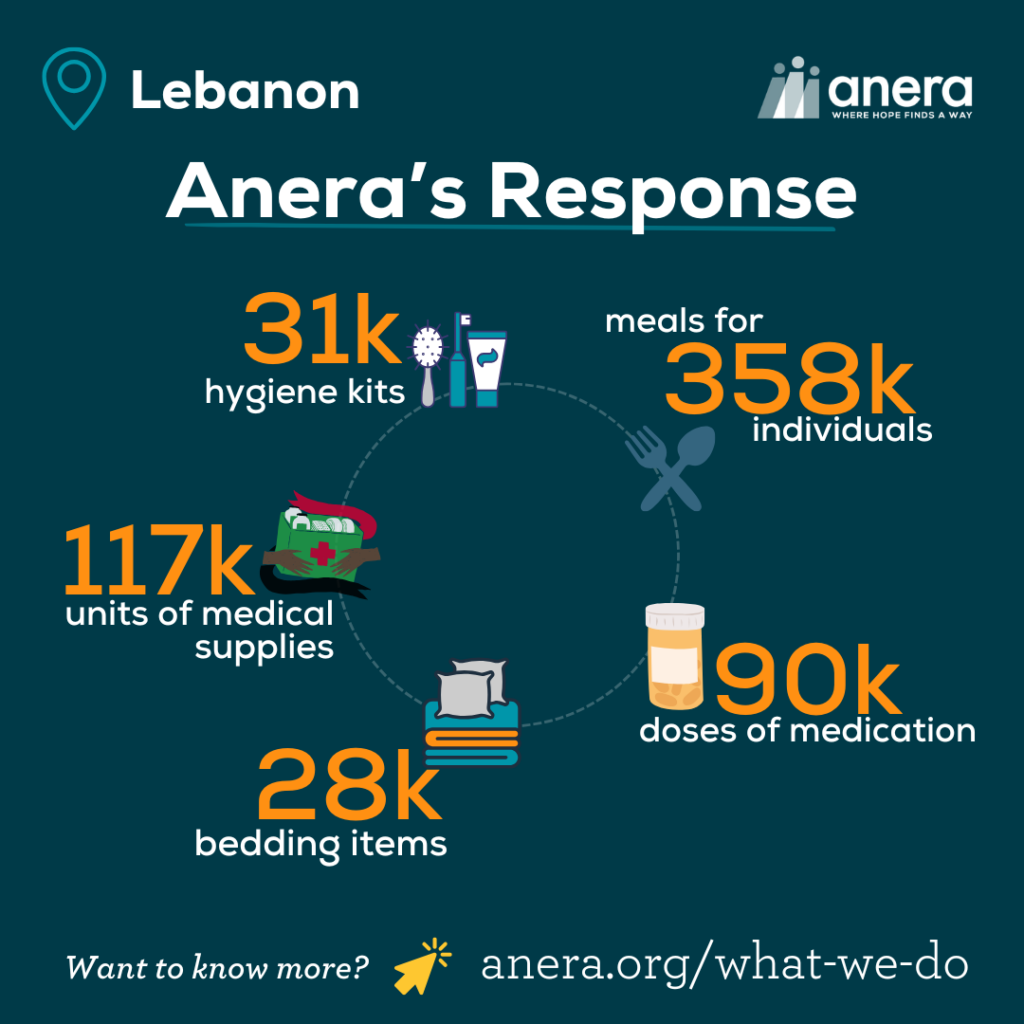

OUR BLOG
Related
Joint Statement 200+ NGOs call for immediate action to end the deadly Israeli distribution scheme (including the so-called Gaza Humanitarian Foundation) in Gaza, revert to the existing UN-led coordination mechanisms, and lift the Israeli government’s blockade on aid and commercial…
